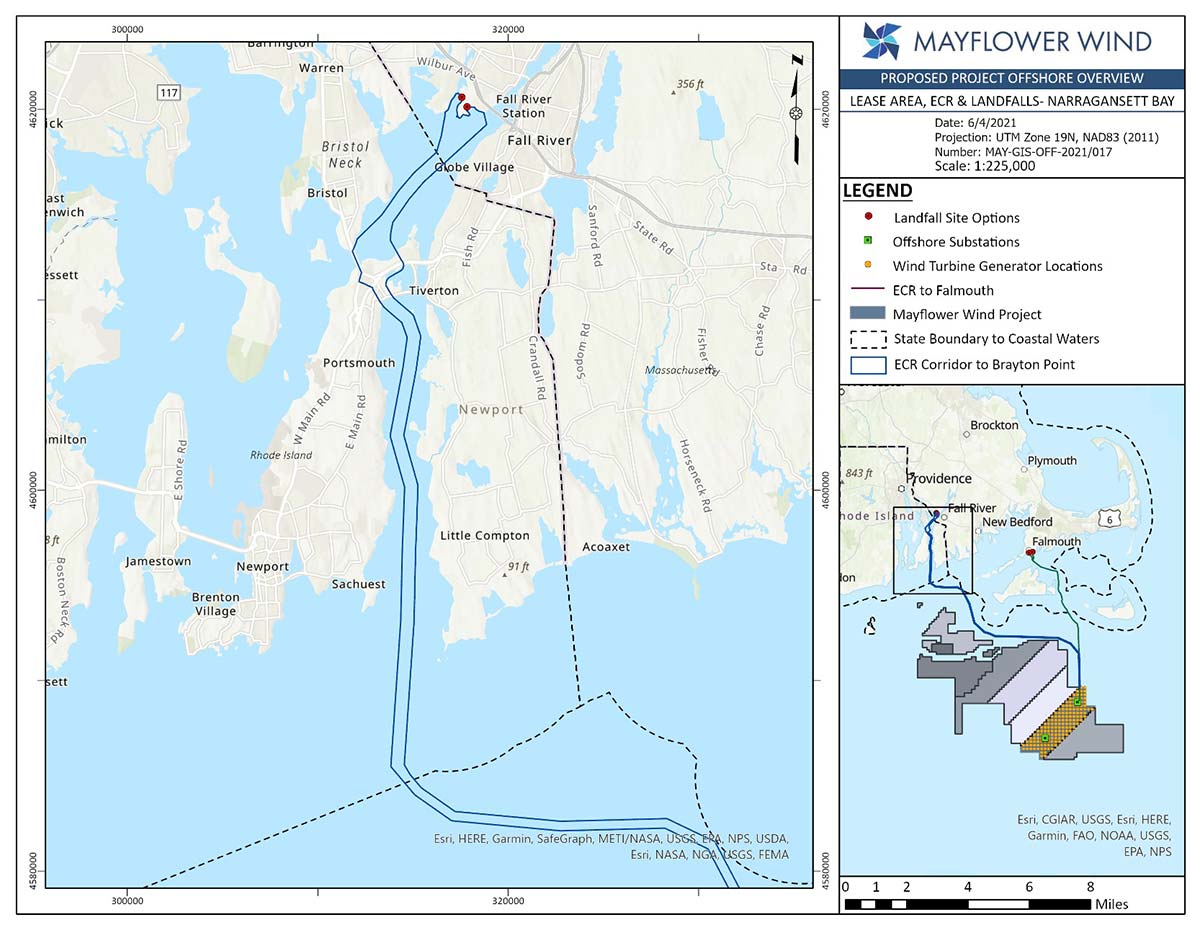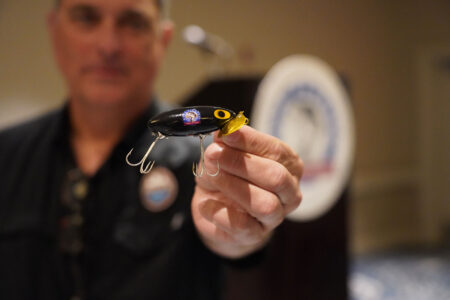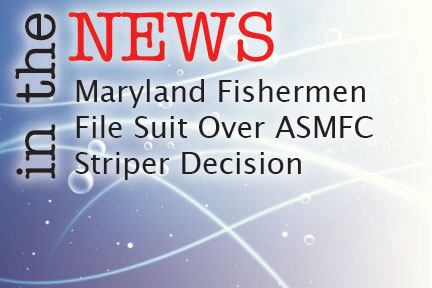An organized group of recreational anglers is opposing a proposal that would bury an export cable from a new offshore wind farm under the Sakonnet River.
The Rhode Island Saltwater Anglers Association (RISAA) has come out against the proposal from offshore wind developer Mayflower Wind, expressing concerns over the impacts to existing fish habitats, and recreational fishing. “We believe that during cable installation, an industrial operation such as burying a cable that is more than a foot wide will disturb fishing across the entire river,” wrote RISAA president Greg Vespe in a letter sent last month to Mayflower Wind. The group instead advocates for Mayflower Wind to avoid using the river entirely and proposed that the company run the cable over land in Massachusetts from Westport to Fall River, where land is already developed and disturbance to habitats would be minimal.

RISAA also expressed concern over the impacts to cod stocks. The New England Fishery Management Council has designated the Sakonnet River as an inshore juvenile cod habitat area of particular concern, and cod fishing remains restricted. Mayflower Wind said it has conducted extensive field surveys to assess seabed conditions across its entire project area, including the proposed cable corridor in the Sakonnet River. The bottom of the river is mostly mud and silt, with areas of crepidula, a kind of colonizing mollusk, according to preliminary data from the company. Results of the field surveys will be assessed by the appropriate Rhode Island agencies for potential impacts on fish habitats, but the company asserts the impacts to fishing will remain minimal.
“Because of the speed and nature of the cable installation, the construction phase will create minimal interference with vessel traffic, including recreational fishing,” said Daniel Hubbard, Mayflower Wind’s director of external affairs. “During construction the seabed will be disturbed but recovery will occur relatively quickly with minimal long-term disturbance around the installation area.” Operation and maintenance of the cable will also have minimal impacts, according to Hubbard. Once the cables are buried, the only expected intrusion will be an annual seabed survey on the areas surrounding the cable.
Recreational anglers use the Sakonnet River from March to December, catching black sea bass, summer flounder, bluefish, striped bass and scup, according to RISAA vice president Rich Hittinger. “Our concern is the Sakonnet River,” said Hittinger. “It’s heavily used for fishing.”
The Mayflower Wind project is a joint venture between the renewable energy arm of Royal Dutch Shell and renewable energy developer Ocean Winds (itself the joint venture of two European multinational utility companies). Its lease area is roughly 30 nautical miles south of Martha’s Vineyard and contains 149 positions for turbines and substations. The wind farm is estimated to generate 2,400 megawatts of energy, enough to power 800,000 homes across New England.
The generated power will be transported along two main export cables: one landing in Falmouth, Massachusetts, and another snaking its way up Rhode Island Sound through the Sakonnet River before it takes a left turn to go overland under the town of Portsmouth and exiting across Mount Hope Bay to a proposed substation site at Brayton Point.
At an August meeting, Mayflower Wind officials emphasized the project would create 14,000 new jobs between construction and the 30 years the farm will be in operation. The operations and maintenance port in Fall River would create around 400 full-time jobs, 75% of which Mayflower Wind has pledged to hire locally.
This story first appeared on ecori.org an amazing resource for conservation news in New England.





